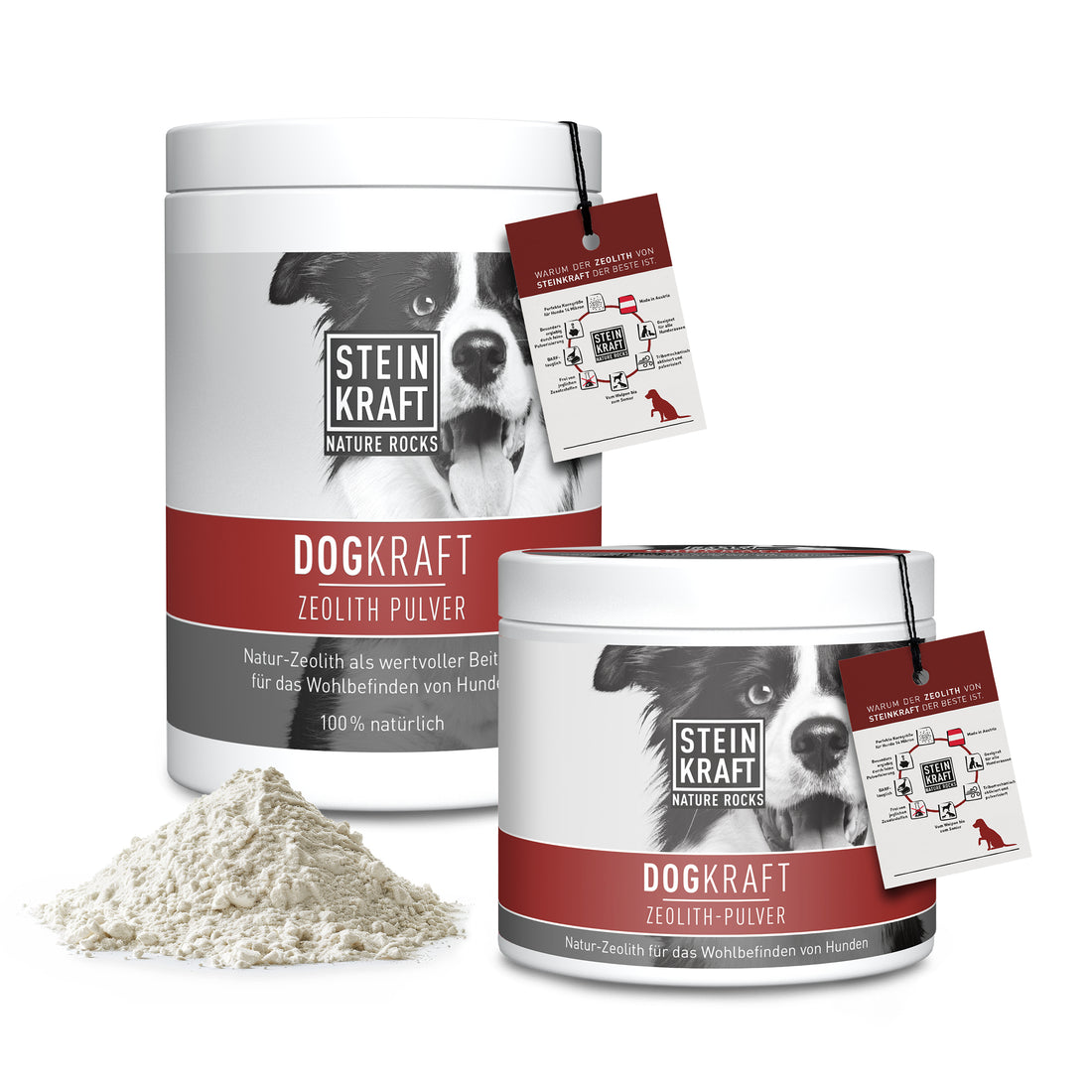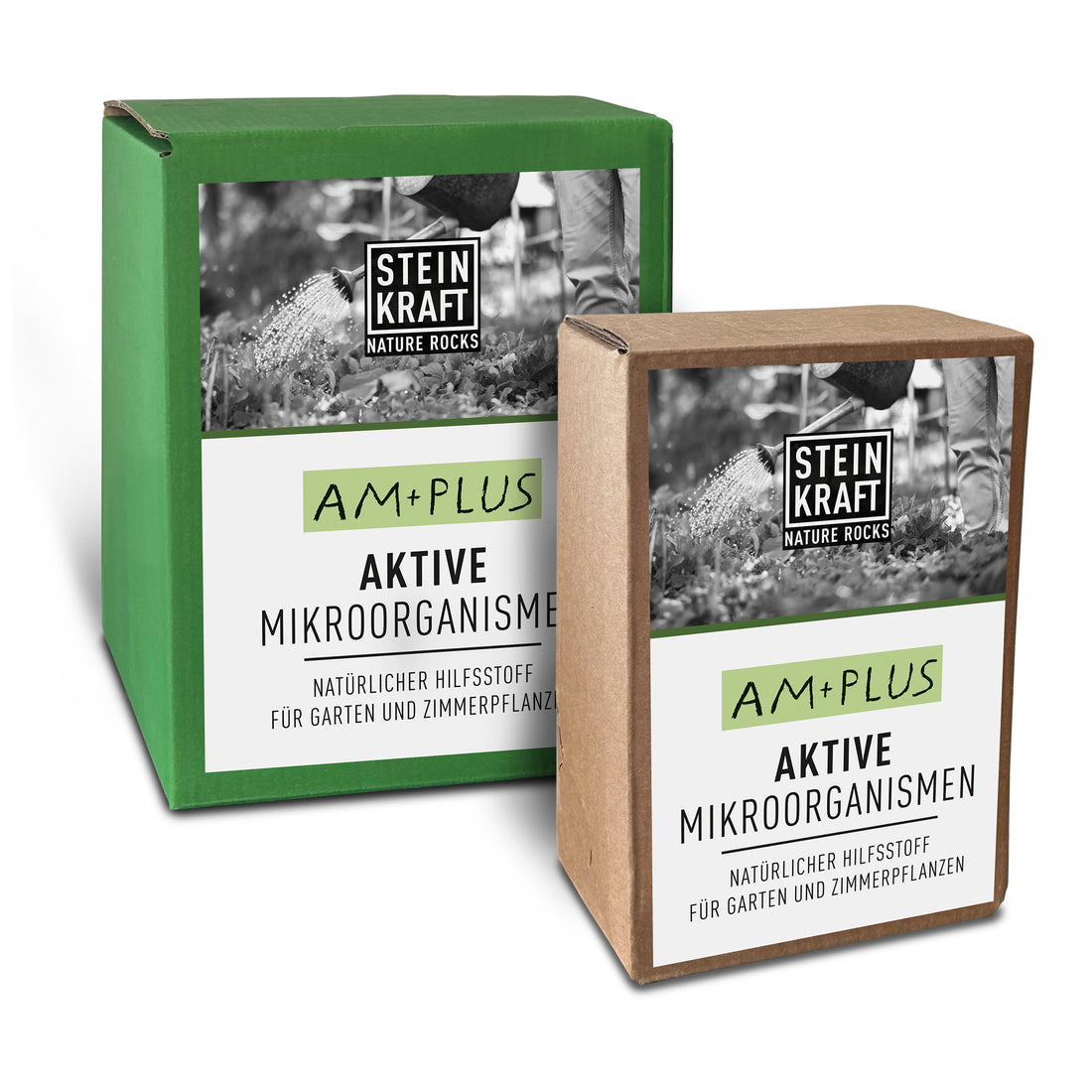Spring for dogs: Typical challenges and how to optimally support your four-legged friend
Finally spring! The days are getting longer, the sun
The weather is back, and nature is coming alive. For us humans, this often means a good mood, renewed energy, and the desire to spend plenty of time outdoors. Our dogs also enjoy warmer temperatures, exciting smells, and varied walks.
But as beautiful as spring is, it brings with it some special challenges for dogs.
In this blog article, you'll learn what you should pay attention to now, how to optimally accompany your dog through the spring season, and why zeolite can be a wonderful support for his body.
1. Spring is parasite season – beware of ticks and the like.
As temperatures rise, unwelcome guests become active again. Ticks are among the biggest pests for dogs in spring. They lurk in the tall grass and undergrowth, just waiting to pounce on their next host. After a long walk in the woods or meadow, you should check your dog thoroughly – ticks especially like to hide on the head, behind the ears, in the armpits, and between the toes.
A tick bite is not only unpleasant but can also transmit dangerous diseases, such as Lyme disease or anaplasmosis. Therefore, it's worth considering appropriate tick protection in advance—be it in the form of spot-ons, collars, or natural alternatives.
Fleas and mites also become more active in spring. So pay attention to whether your dog is scratching or shaking noticeably. If detected early, an infestation can be easily brought under control.
2. Allergy season – when spring itches
Spring is pollen season. Not only many people notice this, but more and more dogs are too. If you notice your dog sneezing more often, rubbing their eyes frequently, or constantly nibbling and licking their paws, this could be a sign of a pollen allergy.

The mucous membranes and skin are often particularly affected. Red ears, watery eyes, or inflamed paw pads are typical symptoms. Recurrent ear infections can also occur in dogs with allergies.
Regularly washing your dog's paws after a walk helps remove pollen before it can be brought into the home or spread further. There are also special care products that can soothe and regenerate the skin.
You can also support your dog internally – more on this later when we talk about zeolite.
3. The big spring cleaning of the coat – coat change deluxe
As soon as the temperatures rise, it all starts: the thick winter coat has to go, and the summer look is on. For many dogs, this is a stressful time, as the shedding process takes energy.

For you, this means brushing regularly. Depending on the coat type, it may be helpful to comb out loose hair daily so the skin can breathe better and prevent matting.
The skin also needs special attention during this time. It's often more sensitive, prone to dryness, or even flaking. An extra dose of nutrients from high-quality oils or supplements can work wonders.

4. Wet meadows, mud and puddles – attention to paw care
Spring is known for its fickle weather. A warm, sunny day is often followed by rain, and the ground remains damp for extended periods. This puts constant strain on your dog's paws.
Wet grass, puddles, and mud attack the sensitive skin between the toes. Small cracks can develop, providing entry points for bacteria or fungi .
It's best to rinse your dog's paws briefly with lukewarm water after every walk and dry them thoroughly – including between the toes. If necessary, you can also use a protective paw care cream.
5. Gentle restart – build up fitness slowly
After a rather leisurely winter, during which walks may have been shorter, many dogs need time to build up their fitness. Older dogs or those with joint problems especially benefit from a gentle return to exercise.
Start with moderate distances and gradually increase the duration and pace. Observe your dog closely: Is he panting more than usual, stopping more often, or seems sluggish the next day? Then it's better to slow down a bit.
This way you can avoid overloading and enjoy extended spring rides together for a long time.

6. Respect for nature – breeding and nesting season
While we enjoy spring, the most important period of the year begins for many wild animals: the breeding and rearing season. Especially now, consideration is needed.
In many regions, dogs are required to be kept on a leash, and for good reason. Even the most well-behaved dog will happily follow its scent when a fawn or rabbit is nearby.
Be mindful of where you're walking and keep your dog on a leash to protect young animals. This way, you're both making a valuable contribution to nature conservation.

7. Poisonous harbingers of spring – keep an eye on plants
As beautiful as these colorful early bloomers are, they can be dangerous for dogs. Many spring plants, such as lily of the valley, tulips, and crocuses, are poisonous to dogs.
If your dog tends to nibble on grass or plant debris while out and about, you should keep an especially watchful eye. Even small amounts of these plants can cause gastrointestinal upset or even poisoning.

How zeolite can support your dog in spring
Especially in spring, when your dog's body has to do a lot – be it through shedding, processing allergens, or dealing with parasites – zeolite can be a valuable aid.
Zeolite is a natural volcanic rock that acts like a sponge: it binds pollutants, heavy metals, bacterial toxins, and excess histamine in the intestines and helps the body excrete these substances.
This is especially interesting if your dog is prone to allergies. Allergic reactions cause increased levels of histamine, which is responsible for, among other things, itching, redness, and inflammation. Zeolite can help by binding excess histamine in the gastrointestinal tract , thus reducing the allergic response.
Zeolite also provides valuable minerals like silicon , which strengthen the skin and coat—ideal during the shedding season. Zeolite also supports intestinal health, which in turn strengthens the immune system and makes your dog more resistant to environmental stress.
Many dog owners report that with regular administration of zeolite, their four-legged friends itch less, get through the coat change better and appear fitter overall.
So if you want to do something good for your dog, feel free to try zeolite.
We also like to use our skin powder with organic lavender oil . Simply dust it on; the zeolite powder is so fine that it penetrates easily between the hairs and onto the skin, where it does its work. It's wound-healing, anti-inflammatory, and parasites don't like it at all.



































